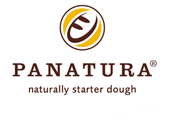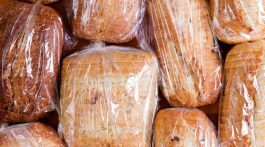
BUSINESS TIMES SINGAPORE on May 24, 2016:
BIOTECHNOLOGY company Holista Colltech Ltd has unveiled a formula for low glycemic index (GI) white bread whose low sugar and carbohydrate content is aimed at reducing the risk of diabetes.
Holista will partner Swiss speciality bakery ingredients supplier VERIPAN AG to manufacture the new low GI bread, PANATURA GI.
Holista said its scientifically-based study confirms that white bread mixed with its proprietary GI lite formula and VERIPAN’s natural sourdough, PANATURA, received a GI reading of 53, the lowest level achieved in clean-label white bread. Holista chief executive Rajen Marnicka and Meiert Grootes, CEO of VERIPAN, hope to make Singapore a launchpad in Asia for their low GI white bread as well as a site to further their research and development efforts.
Mr Grootes said Singapore has the right infrastructure and a supportive government that would create the perfect environment for further R&D. The partners are looking into producing other low GI food such as noodles and rice. “A bowl of rice is equivalent to 10 teaspoons of sugar,” said Dr Rajen, who added that “consumers are uneducated about the dangers of rice”. “While ordering lunch, people order tea that is less sweet but add more rice to their plate,” he said. “They do not understand that essentially, rice is sugar.” While Singaporeans’ ancestors consumed rice for centuries, the difference lies in the fact that the rice and food we consume now is processed and refined. Furthermore, “the level of physical activity is reduced and food consumption has increased”, said Mr Grootes. However, changing the eating habits of consumers is difficult, which is why the companies have developed this low GI bread that “tastes exactly like white bread but has the health benefits of wholemeal bread.”
The increase in wealth in Asia has led to a rise in the consumption of processed and refined food and has resulted in diseases such as diabetes, obesity and high blood pressure becoming more common.
Dr Rajen and Mr Grootes on their part are focusing on the industrialisation of healthy carbohydrates and maintaining price competitiveness of these foods. “If you provide good pricing, there is no need for so much education to make the jump,” said Dr Rajen. A consumer is more likely to switch to healthier products if the price is relatively lower. Consumers, he explained, are irrational when it comes to food consumption. Therefore, the partners aim to make healthy alternatives taste equally good and are affordable to lower income families.
The food industry has a role to play, too. There has been increased pressure on food companies to provide healthier options. “These (healthier) products must be able to run on the same production line, “ said Mr Grootes. He aims to optimise production lines such that industries would not need to adopt new machinery to produce the low GI bread.















